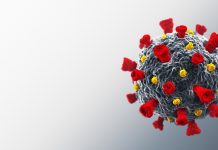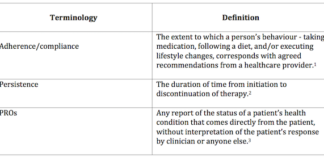“In 2001, Pfizer started doing Regional Marketing to squeeze extra share/volume out of the Lipitor Brand (and a few other $1B blockbusters). I [Scott] remember, when I was on the Regional Marketing Team for Pfizer in those days, Lipitor was $250 million in sales, just in New Jersey (the region I was responsible for growing). Each share point was worth $25 million!“
R.J.: When looking back at your 25+ years in marketing and especially, your experience working in pharmaceutical regional marketing, what are the biggest changes you have noticed?
Scott: The biggest change I see, is the same change most of you see. Less emphasis on big general medicine products and much more focus on products that help with rare diseases and oncology products. I recently read that over 100 million Americans have high blood pressure and I remember working on several hypertension products over the years. Last month, I was asked to consult on a product that had less than 1,000 patients, nationwide. This is a big change.
With this industry change, I’ve also seen a big change in why brands choose regional marketing as one of their top annual strategies. The reasons have shifted in the past years, partially since more products are oncology and specialty-focused, and partially due to changing times/market.
R.J.: What would you say are the top three reasons why brands are turning to regional marketing in 2019?
Scott: The top three reasons brands are turning to regional marketing in 2019 are because brand leaders are feeling the following
- Frustrated as regional performance variation is impacting their brand’s results.
- Tired of the limited impact of one-size-fits-all communications strategies
- Confused on how to support sales reps who are struggling to better engage healthcare professionals (HCPs).
[Below Scott elaborates on each]:
Scott: (starting with the first reason: performance variation): When I was a Brand Manager on Cover Girl cosmetics in the 1990s, we had a 29-share nationally and our best market, Minneapolis, had a 31-share (7% better). In the pharmaceutical industry, the AVERAGE performance variation we see is 400% and some as high as 1,600%. What exactly does 400% look like? It means if you have a 10-share in City A, you might have a 40 share in City B – that’s performance variation. And while it’s frustrating for many brand managers, what’s even more frustrating is that once managers become aware of this variation, they are not sure what to do about it.
R.J.: What would you say is a ‘best practice’ to overcome this frustration?
Scott: A best practice that I’ve not only seen, but experienced, is to do an analysis that tells the brand manager what is driving the business in City A, City B, etc.
Once you know the local/regional drivers of performance, you are half way to solving the problem.
Once you do the analysis, the second half to solving the performance variation problem requires two parts.
Part 1 is grouping ‘like’ markets and part 2 is training the organization (typically the sales team who will need to execute differently in different parts of the country). The training part is something most brand leaders have experience doing, so I’m not going to talk about that, but the grouping of “like” markets is more challenging.
R.J.: What makes it so challenging?
Scott: Imagine if you have 50 sales territories, one for each state. Now imagine you find the biggest driver of performance in each state and you have 50, different top drivers – it is just way too much to effectively execute. The good news is most analyses uncover 6-15 different top drivers and, while 6-15 is much smaller than 50, it is still too much. What I’ve observed as a best practice is to pick the top three-to-five local drivers and, typically, it turns out that 90+% of your markets will fall into one of these groups, as either their top or second to top drivers, which makes regional marketing executable.
Scott: [moving onto the second reason: one-size-fits all]: While everyone I speak with agrees that you should have a different marketing plan for a 10-share market versus a 40-share market, people are not sure how to execute. Doing a different marketing plan for each city feels overwhelming, so while people want to go beyond one-size-fits-all, they are not sure how to do it. The best practice, in this case, is to develop marketing programs that are local, yet scalable. This means that the local HCP thinks the program was built specifically for them, but the brand and review committee teams can develop and approve in a scalable way.
R.J.: Can you give an example of a local program done in a scalable way?
Scott: Yes. Local speaker programs are a good example of this. The slide deck is done once, and 95% of the content is the same from market to market. Sometimes you put in a slide or two listing local formulary data to make the slide deck more relevant to the local audience, but, for the most part, it is the same deck everywhere.
You then have the slide deck presented/executed by a local doctor, making the program feel like it was developed just for the local audience, but it is very scalable to build and get approved.
R.J.: Yes, makes sense.
Scott: [moving onto the third reason: better engagement of HCPs]: Like all Americans, HCPs are bombarded with marketing messages too many times per day. Not much opportunity for your messages to break through the clutter and stick. So, what is a marketer to do? The problem becomes worse when you start to think about all the sales professionals you are still paying and if the messages they attempt to deliver do not break through the clutter; it can feel like an expensive waste of resources. To avoid this, the best practice I’d recommend is to make the marketing materials more relevant to the physicians.
R.J.: What would be an example of this?
Scott: A great consumer example of this is Bud Light. Bud Light has 32 different versions of its beer, one for each NFL Team. If you go to a liquor store in Philadelphia, you see Bud Light cans with a Philadelphia Eagles logo on it, and if you head to Dallas, the cans there have a Dallas Cowboys logo on it. The beer formula is the exact same; it’s the messaging on the beer can that breaks thought the clutter of sameness in the liquor store. People buy Bud Light [with the Eagles or Dallas logo] because it feels more relevant. To me, the best practice is people who have applied this concept to pharmaceutical marketing.
R.J.: Scott, thank you for giving us your perspective on why brands should switch to regional marketing.
Scott: Thank you R.J., my pleasure.
R.J.: [turning his attention to the reader] What are your thoughts on how regional marketing is changing to adapt to shifts in the pharmaceutical industry? Please e-mail Scott at sweintraub@RelevateHG.com; he’d love to read your thoughts.



![6 Digital Tools at the Center of Healthcare Digitalization [INFOGRAPHIC]](http://ec2-54-175-84-28.compute-1.amazonaws.com/pharma-mkting.com/wp-content/uploads/2021/04/6DigitalTools_600px-218x150.jpg)




![6 Digital Tools at the Center of Healthcare Digitalization [INFOGRAPHIC]](http://ec2-54-175-84-28.compute-1.amazonaws.com/pharma-mkting.com/wp-content/uploads/2021/04/6DigitalTools_600px-100x70.jpg)




